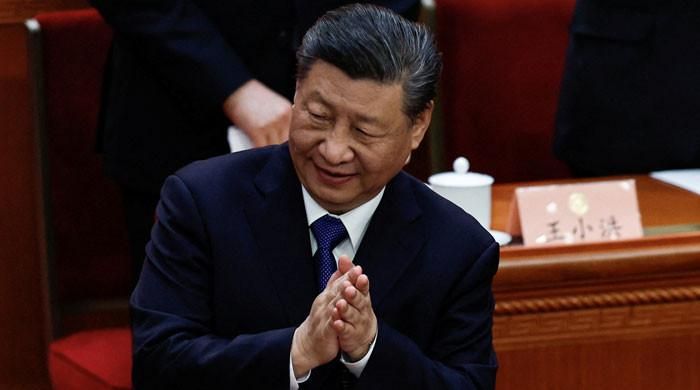With new governments set to take over at both the federal and provincial levels, all eyes are on significant challenges and immediate risks, which require close scrutiny.
These challenges include social divisions, economic volatility, climate change, unemployment, inflation and security threats, all of which prominently shape the current risk landscape. Additionally, we see new struggles, including the widespread spread of misinformation, exacerbating these challenges, as highlighted in the WEF Global Risk Report for 2024. We also see the emergence of new geopolitical tensions, driving a reassessment of our approach to external diplomacy.
The new government will face immediate risks. Looking at the difficult combination of risks and their mitigation, it is safe to assume that a lot of collaboration will be needed to address the situation, as traditional diplomatic and governance mechanisms prove inadequate to navigate the complexities of our volatile scenario.
Amid this critical period, the country's leaders must proactively assess vulnerabilities, remain alert to changing dynamics, and strengthen their risk mitigation frameworks and strategies.
Cultivating a culture of creativity and collaboration is essential to collectively improve resilience in the face of these multifaceted challenges and meet the expectations of young people who feel their voices are not adequately represented in the political process, leading to feelings of disenfranchisement and disconnection from dominant politics.
High unemployment rates and limited economic opportunities contribute to apathy toward the political system, as young people prioritize immediate economic concerns over political participation.
Addressing these challenges requires efforts to promote transparency, accountability and inclusion within the political system. It also requires initiatives to empower and encourage young people to actively participate in shaping the future of our country. The help Pakistan needs goes beyond financial aid and loans and perhaps towards more foreign direct investment (FDI), green infrastructure and industrial development, and a technology-driven secure environment.
For all this to happen, the new government will have to look towards its friends and partners abroad and right now, China stands out as a partner that Pakistan can rely on. In a recent statement on the post-election scenario, the Chinese Foreign Ministry spokesperson stated that “China is willing to collaborate with the new government, working hand in hand to achieve mutual prosperity and development. “It is imperative that all stakeholders prioritize political cohesion to pave the way for progress.”
But as we chart our paths and enumerate avenues of cooperation, we must be clear about how and where China can help us and design our diplomacy accordingly. Encouraging investment in a country despite security concerns requires a strategic and multifaceted approach for which a whole-of-government strategy can only work.
On the Chinese side, it may have to adapt to the evolving situation in Pakistan. Over the past 10 years, China's involvement in Pakistan through the CPEC initiative has yielded significant benefits. This initiative has generated more than 200,000 employment opportunities, facilitated the development of 6,000 MW of electricity and built more than 500 kilometers of roads, promoting rural-urban synergy and regional connectivity.
The upcoming commissioning of the Gwadar airport, funded by a $230 million Chinese grant and set to become operational this year, will further strengthen regional connectivity. However, a recurring problem has been the failure to attract private Chinese companies, apparently due to the absence of a conducive business environment for foreign private sector companies and prevailing capacity and security issues.
A clear example is the non-utilization of the entire Chinese subsidy of one billion dollars for social sector development (a joint working group (JWG) was created to carry out related work) and the poor development of the SEZs initiated under the CPEC.
Similarly, there has been limited interaction from the CPEC Business Council, which was set up with high expectations. Thus, despite possessing significant resources, Chinese companies have faced challenges in moving to Pakistan and have preferred Bangladesh, Laos and Vietnam.
Addressing these challenges requires effective collaboration between various stakeholders, including the federal and provincial governments as well as business chambers to collectively address these issues and facilitate smoother integration and investment of Chinese companies in Pakistan's economy.
While some argue that IMF-related issues may further slow CPEC progress, there are several sectors where Chinese support can be sought immediately despite the debt-related narrative, starting with support in development of the prioritized SEZs (including the Karachi area). Steel Mills and Islamabad area) where profit expectations, policy continuity and utility-related risk mitigation are the main concerns for investment mobilization.
This can be initiated by maintaining open lines of communication with existing Chinese investors and providing regular updates on market conditions, regulatory changes and any developments that may affect their investments, facilitating people-to-people exchanges and business links (starting with interaction with all the countries). -Pakistan Chinese Business Association).
Implementing strategies marked by flexibility, moderation, precision and effectiveness is essential to achieve this objective. It is equally important to enhance marketing efforts in China in relation to Pakistan's economic potential and guide investors' perceptions towards confidence in its bright prospects.
Despite current economic challenges, Pakistan offers significant potential as a profitable investment destination. Promoting the motto “Invest in Pakistan” is vital to attracting Chinese investments. Building trust with existing investors and turning them into champions to attract more investors requires a strategic approach focused on relationship building, transparency and showcasing success stories.
The Prime Minister and the Minister of Planning should request the convening of the Joint Cooperation Committee (JCC) meeting in Beijing and show their commitment to the completion of existing projects and also present projects in specific sectors such as agriculture and livestock, telecommunications, renewable energies, work. intensive industries, including textiles, while urging support for the development of SEZs.
However, before this, it is imperative to strengthen the CPEC cell/authority in the Ministry of Planning, Development and Reform (MoPDR) and enhance the capacity of provincial investment nodes. While attention to mining projects may be postponed to a later phase, immediate steps can be taken to establish marine, fruit and food processing and pharmaceutical industries zones in Azad Jammu and Kashmir, Balochistan and Gilgit-Baltistan within the framework of cooperation CPEC Industrial. and transmission and distribution projects in the energy sector.
The new government could introduce special exemptions for Chinese tourists, with the aim of boosting public opinion and confidence. This can be further accelerated by encouraging Pakistan's private sector to modernize its business processes, invest in joint research and development, enhance human capital, seek international certifications and meet quality standards.
This requires an approach that involves regular, meaningful and timely engagements with Chinese political and business leaders, showcasing investment projects and incentives, essential to addressing political, economic and social uncertainties. Despite the obstacles, whether financial or security-related, the basic principles of attracting investments remain the same for everyone and we must focus on them.
As for the question of whether China can provide industrial cooperation and sectoral development support to Pakistan in the short and long term, the resounding answer is “yes.” However, for this to materialize, it is a fact that Pakistan must first take steps to strengthen its position by establishing competitive advantages and leveraging natural endowment through complete top-down synergy and political will.
For the Chinese, it does not matter whether we have a CPEC authority or a cell in the MoPDR and provincial secretariats, as long as it is an efficient one-stop shop for investment support and grievance redressal, similar to that of other countries. partners. Generating trust and efficiency will be key to obtaining immediate results.
The writer is a faculty member of several institutes and universities and has also served as CEO of KP Board of Investment and Trade (BOIT). He can be contacted at: [email protected]
Disclaimer: The views expressed in this article are those of the writer and do not necessarily reflect the editorial policy of Geo.tv.
Originally published in The News












